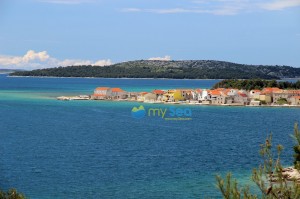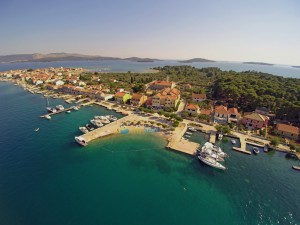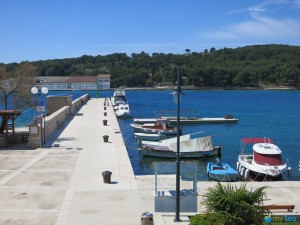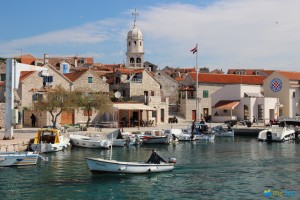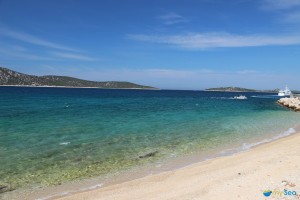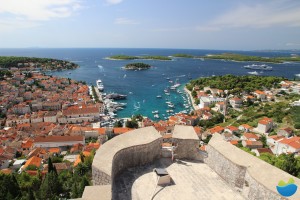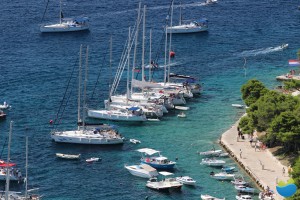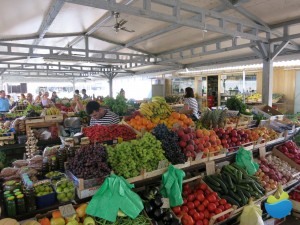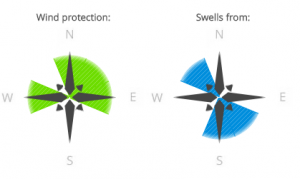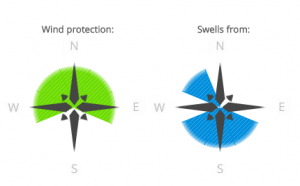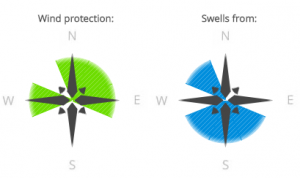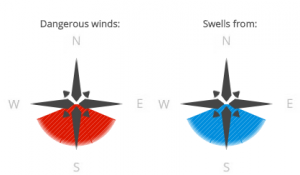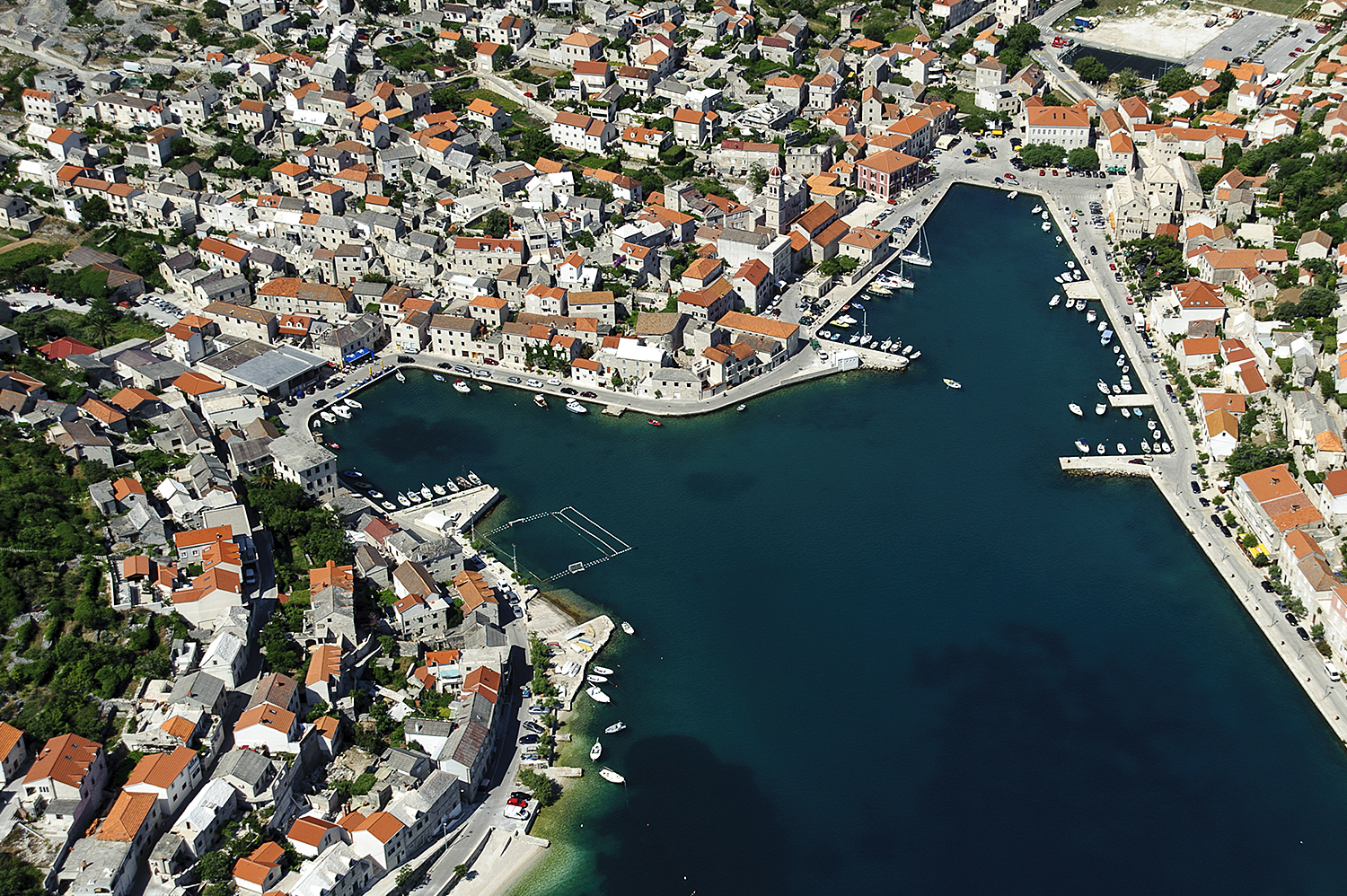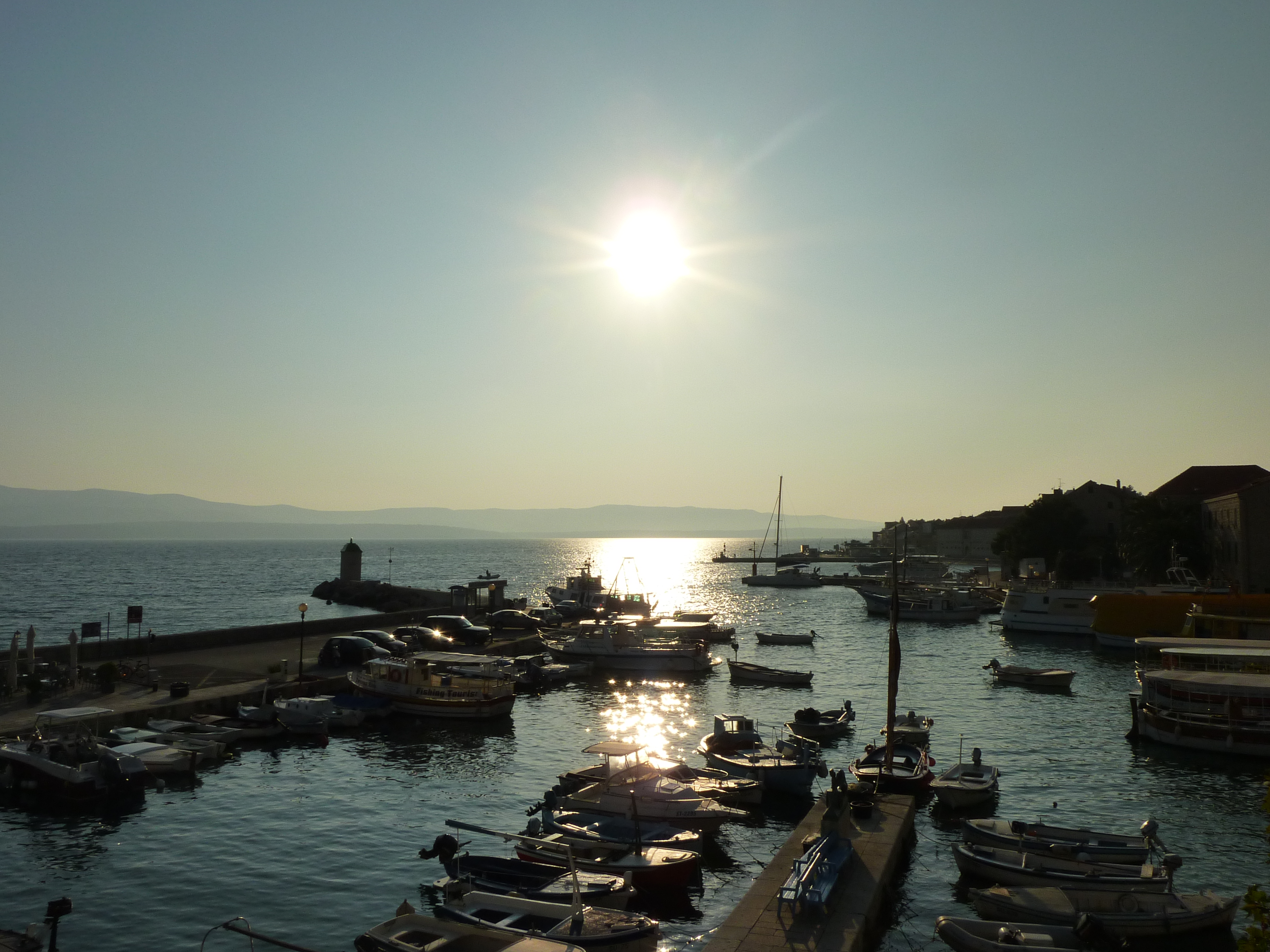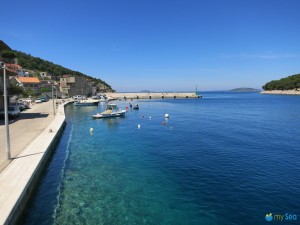
Muna, Žirje
Please log in to mySea to follow the links!
Shortly afterwards we cast off and get to Muna in Žirje quite quickly. Muna is a small place where time seems to have stood still. It is even less crowded and has fewer tourists than other places in the Šibenik archipelago. Even during the season it seems to be in hibernation. Since spring of 2014 the berth situation here has improved dramatically. 20 berths with mooring lines are now available at the eastern quay in Muna harbour. The water at the quay is about 2 to 3 metres deep. The place right at the breakwater has to be kept clear for the ferry, the lifeline of the island. There is a small mini market at the harbour as well as a restaurant and café, which are open from about June to mid-September. Water, electricity and sanitary facilities are not available.
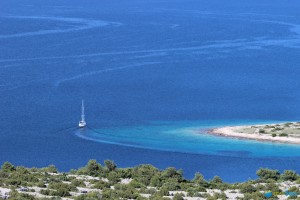
Žirje
Ante is already at the quay and helps us moor. His old off-road Suzuki creaks and groans as we drive over the uneven gravel roads. Žirje is the largest island in the Šibenik archipelago and the farthest one from the coast. Tourists often go past the island. Individual tourists mainly come here, such as hikers, mountain bikers and of course sailors. Everything the rest of the 80 inhabitants and tourists need is either grown by the locals or has to be transported over from the mainland by ferry. In winter, life on the island is very lonely and can be difficult at times.
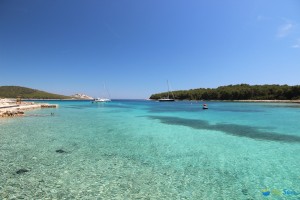
Stupica, Žirje
Koromasna bay in the east of the island is only on very few crews’ itineraries. Several unfinished houses blemish the otherwise green seafront. A few fishing boats are moored behind a jetty. When it is calm, the water is so clear that it is difficult to tell the difference between the surface of the water and the seabed. A restaurant is open during the season in the south-eastern part of the bay. Right in front of it there is a small quay but the depth is not always suitable for yachts.
The south-east coast is strongly fragmented and provides a few highlights for yachts such as the Mala and Vela Stupica bays. At the smaller bay located further to the east, boats can anchor freely in the middle of glorious and unspoilt nature. No more offshore islands obstruct the clear view of the broad Adriatic sea. If there was no curvature of the earth, visitors would be able to look right at the Italian boot from here. In Vela Stupica there are two large buoy fields with 40 buoys altogether. The light sandy seabed makes the water appear even clearer than it already is. At the seafront, the cosy Stupica konoba is “hidden” between two shady pine trees. “If you want to dine here in the season, then you can only do so with a reservation,” states Maria, the konoba manager. There are only a few tables in the well-kept grounds, mass dining does not exist here. Just fish and meat are served here as well as vegetables from the island. But only what is available at the moment.
Many tourists stay at the bay for at least a few days to enjoy the peace and quiet. Should anyone need some exercise, then they can go for a walk on the Gradina mountain. There are visible remains of the Byzantine fortress dating from the 6th century. The view is also spectacular. You will need to wear sturdy shoes for the walk. Ante naturally knows all of the trails on the island. He gets hold of a stick and keeps weaving it in and out the entire time in front of him. Spiders have spun their webs between the bushes and are waiting patiently for prey. Ante clears the path for us with the stick, making sure we don’t become the creepy-crawlies prey.
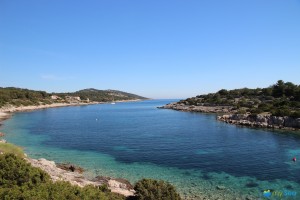
Tratinska, Žirje
On the western side of Žirjes, Tratinska bay cuts far into the shore and provides perfect shelter from the Bora. The deeper you sail into the bay, the better the protection. 22 buoys are available here in the season. The Tratinska konoba is located at the northern seafront and is run by a young couple. The konoba also has a few apartments with a swimming pool. This is also the home base of the Austrian Yachting Sports Association (YSVÖ) and a diving centre.
Ante promises to show us one more very special highlight. As we do not have a lot of time left, we get into the rickety Suzuki. The road takes us past Tratinska bay, uphill all the way. In former times the Yugoslav army used to have an observation post on the mountain crest. It quickly becomes obvious as to why. There is no other place in the area providing a better panoramic view than up here. To the north you can see the scattered islands of the Kornati, to the east you overlook the entire Šibenik archipelago, Murter and the town of Šibenik. Towards the south the outline of Vis appears and on clear days you can see Italy to the west. An old concrete bunker framed by a handrail serves as an observation platform. There are small signs on the handrail with the names and distances of places. Towards the south-east we discover a sign but this place is not visible from the platform: Perth, Australia, 13,109 km away.
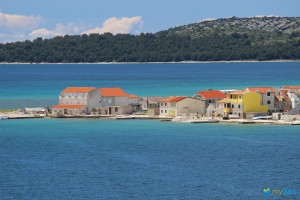
Krapanj
On the way back we pay a visit to Krapanj, the most densely populated island in Croatia. The island is barely 1.5 m above sea level and is only 300 m from Brodarica opposite on the mainland. The approach is only possible from the south as it is very shallow in the north of the island. Krapanj is a popular photo motif. If you go past the bridge behind Brodarica, you will get to a small parking area from where you will have an unobstructed view of Krapanj. In the sunlight it looks as though the houses and the surrounding sea are shining. A beautiful picturesque view.
The harbour can only be used by local yachts, visitors cannot moor here. However, they are welcome at the well-developed jetty at Hotel Spongiola where berths, water and electricity are provided. There is a small beach right next to it. Sanitary facilities are available in the hotel. On the mainland opposite, the well-known restaurant Zlatnaribica has built a jetty where you can only moor if you also eat at the restaurant. The restaurant is especially renowned for its fresh wild fish and seafood for which it has received various awards and prizes.
We came upon many more bays, anchorages, small jetties, restaurants and lovely people on our discovery tour through the Šibenik archipelago. The people in the region all seemed to be relaxed, it is less hectic than elsewhere. And this is probably also this region’s secret. The region is ideal for nature lovers and for people who find it more important to enjoy and savour life rather than experience everything at a fast pace. If you have not been to this region yet, make sure you bring plenty of time to explore the most beautiful areas -Šibenik is the ideal starting point.
The Sibenik archipelago is also a beautiful destination for yacht charter and sailing holidays. Besides NCP and Mare also Yachting 2000 offers well-kept sailing yachts and catamarans. Charter reviews of Yachting 2000 can be found at Euminia – the leading review system for chartered yachts.
Have you already read part 1 & 2?
Find out more on mySea.
